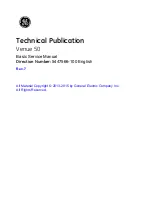Lexicon
3-30
PCM 81 User Guide
Pitch
The Resonant Chord algorithms: Res1>Plate and Res 2>Plate each have a
Pitch row that contains the parameters for setting and controlling the tuning of
the effect's resonators. Each set of parameters is presented separately here.
Res 1>Plate Pitch parameters
The voice resonators take the audio impulse from a delay voice and “resonate”
it at a desired pitch. Until a resonator is assigned a pitch, it does not resonate.
The Res1 effect is a “round robin” pitch assign in that pitch changes are
individually assigned to one of (as many as) six voice resonators. For example,
assume that all six voice resonators are active in the newly loaded effect, and
the first pitch assigned is A4. Voice 1’s resonator will be set to the A4 frequency.
Assign B4, and Voice 2’s resonator will be set to that pitch. In this example, if we
assign four more pitches (D5, G4, A#:Bb4, C5, for example), they will be
assigned to the Voice 3, 4, 5, and 6 resonators, respectively. If a seventh pitch
is assigned, for example, F3, Voice 1’s resonator will be changed from A4 to F3
(the other resonators remain at the last assigned pitches).
Assign
This parameter has a range of C0 to G10 (128 pitches) to be convenient for MIDI
patching. As the value of this parameter is changed, each “next value” is
assigned to the next active pitch resonator of the six possible active resonators.
An example might be driving this parameter with a slow LFO to achieve an effect
something like strumming the strings of an open piano.
Tuning
This parameter allows you to tune the A440 reference of the box anywhere from
430.0-450.0Hz in 0.1Hz increments.
Active
This parameter allows you to define the number of active voice resonators. You
can choose from 0 (no resonators active) to 6. Setting the value to 1 will limit pitch
assignments to Voice 1’s resonator. Setting the value to 2 will limit the round
robin pitch assign to Voices 1 and 2. A value of 6 uses all the voice resonators.
A handy feature of this parameter is the ability to mute resonators. For example,
you can patch this parameter to a footswitch or pedal, allowing you to drive the
parameter value down to 0 at any time, causing the resonators to stop playing
their last assigned pitches. You can then immediately drive it back up to the
desired number of active resonators. This “clears” the pitch assign for the
resonators, so they don’t go back to playing their previous pitches, but rather wait
for the next pitch assign to come along before resonating.
Unison
This is a simple On/Off control. When set to On, pitch assigns will be sent
simultaneously to all active resonators. When set to Off, pitch assigns will
operate in the round robin method described earlier. This allows you to set
multiple delay times for all Voices and allows a single pitch assign (rather than
6 individual assigns) to set all the resonators to the same pitch. The pitch will ring
out at 6 different delay times from the input impulse.
Summary of Contents for PCM 81 - REV
Page 1: ...User Guide Digital Effects Processor PCM 81...
Page 3: ...User Guide Digital Effects Processor PCM 81...
Page 12: ...1 1 Product Overview 1 Product Overview Block Diagram...
Page 21: ...Lexicon PCM 81 User Guide 1 10...
Page 72: ...3 11 The Algorithms and Their Parameters Chorus Rvb cont d...
Page 74: ...3 13 The Algorithms and Their Parameters M Band Rvb cont d...
Page 102: ...3 41 The Algorithms and Their Parameters...
Page 106: ...3 45 The Algorithms and Their Parameters...
Page 108: ...3 47 The Algorithms and Their Parameters...
Page 157: ...Lexicon 4 30 PCM 81 User Guide...
Page 167: ...Lexicon 5 10 PCM 81 User Guide...


















